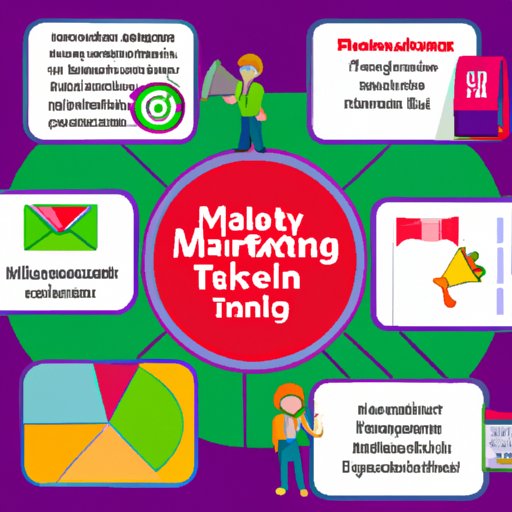Introduction
Developing an effective marketing strategy is essential for any business. It helps you attract new customers and keep existing ones coming back for more. But what exactly is a marketing strategy? Simply put, it’s a plan for how you’ll use various marketing tactics to reach your desired goals. In this guide, we’ll take a look at the steps involved in creating a successful marketing strategy.
Identify Your Target Audience
The first step in creating a marketing strategy is to identify your target audience. This means understanding who your ideal customer is, what their needs are, and how your product or service can meet those needs. To do this, you’ll need to analyze the market and define your ideal customer profile.
Start by researching your industry and learning as much as you can about your potential customers. Look into demographic information such as age, gender, income level, location, and interests. You can also conduct surveys and focus groups to gain insight into the wants and needs of your target audience.
Research Your Competition
Next, you’ll need to research your competition. Identify who your competitors are and analyze their strategies. Try to get a sense of their strengths and weaknesses, as well as what they offer that you don’t. This will help you determine where you have an advantage and where you may need to improve.
You can also use competitive analysis to find out what tactics your competitors are using. Check out their websites, social media accounts, and other online presence to see what kind of messaging they’re using and which channels they’re focusing on.
Set Goals and Objectives
Once you’ve identified your target audience and researched your competition, it’s time to set some goals and objectives. Establish measurable goals that you want to achieve with your marketing efforts. These could include increasing web traffic, boosting sales, or expanding your customer base.
Then, set objectives that align with your goals. These should be specific, actionable steps that will help you get closer to achieving your goals. For example, if one of your goals is to increase web traffic, an objective could be to launch a content marketing campaign.
Define Your Unique Selling Proposition
Your unique selling proposition (USP) is what sets you apart from your competitors. It’s the thing that makes your product or service special and desirable. Take some time to think about what makes your offering different and come up with a clear message that conveys this to your customers.
When crafting your USP, focus on the benefits of your product or service rather than features. Explain how it solves a problem or makes life easier for your customers. Make sure your message is consistent across all channels so that customers recognize and remember your brand.
Develop a Brand Identity
Creating a consistent brand identity is an important part of any marketing strategy. Start by choosing a logo, color palette, and font that reflect your brand personality. Then, make sure these elements are used consistently across all marketing materials, from your website and social media accounts to print ads and packaging.
Visual elements such as images, videos, and infographics can also help to communicate your message and create a cohesive brand identity. Make sure these visuals follow the same aesthetic and reinforce your brand message.

Create a Multichannel Marketing Plan
A successful marketing strategy should incorporate multiple channels. Start by optimizing your digital channels such as your website, email campaigns, and social media accounts. Make sure they’re up-to-date and optimized for conversions.
You should also consider leveraging traditional media such as television, radio, and print advertising. These channels can be especially effective when targeting certain demographics or launching a new product or service.

Monitor and Evaluate Your Results
Finally, it’s important to track the performance of your marketing efforts. Set up tracking systems to measure key performance metrics such as website visits, conversions, and return on investment (ROI). This will help you determine which tactics are working and which need to be adjusted.
It’s also a good idea to evaluate your marketing strategy on a regular basis. This will help you stay agile and adjust your tactics as needed to ensure you’re achieving your desired results.
Conclusion
Creating an effective marketing strategy requires careful planning and research. Start by identifying your target audience and researching your competition. Then, set goals and objectives and define your unique selling proposition. Develop a strong brand identity and create a multichannel marketing plan. Finally, monitor and evaluate your results to ensure your strategy is working.
By following these steps, you’ll be well on your way to developing a successful marketing strategy that will help you reach your desired goals.
(Note: Is this article not meeting your expectations? Do you have knowledge or insights to share? Unlock new opportunities and expand your reach by joining our authors team. Click Registration to join us and share your expertise with our readers.)
